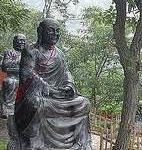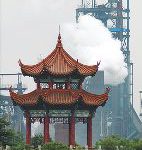The protection of wild plants and animals is an important part of humanity’s work to safeguard and improve the environment. Of particular concern is the preservation and reasonable use of these resources in regard to the production of Chinese medicine. We place great importance on the sustainable use of sources of Chinese medicine, on the physical and intellectual-property protection of our national cultural heritage, and on how Chinese medicine can better serve humanity. In switching away from the use of less sustainable wild resources, artificial cultivation is a proven, reliable method.
The protection of wild flora and fauna and the development of Chinese medicine are closely related: the medicine relies heavily on wild sources of pharmaceutical ingredients, substances which come from animals, plants and minerals. The principles of Chinese medicine are applied to make these ingredients into a unique medical system which has made an irreplaceable contribution to population growth and disease control for the Chinese people. With people again coming to respect nature, Chinese medicine as a natural system of health care is attracting more attention. We should ensure that the medicinal culture we pass on is authentic and true to its roots.
Protection of wild resources is to encourage their recovery and growth, to guarantee their natural environment and, in particular, to ensure sustainable use through artificial cultivation. Ensuring such sustainability is the only way to promote a positive connection between protection and use.
In 1958, the Chinese government launched a campaign to ensure supply of sources of Chinese pharmaceutical ingredients, establishing a research institution to investigate the artificial raising of ingredients in short supply. The results were very successful. Breakthroughs were made in the raising of a number of plants and animals, ensuring a pharmaceutical supply and, in some cases, authorisation for food use.
Throughout history, China has been concerned with the protection and sustainable use of these resources. Several hundred common ingredients are farmed, accounting for 70% of total supply. And these are all the result of domestication by workers in the field of Chinese medicine. This has made a positive contribution to the development of Chinese medicine.
Technological breakthroughs have allowed China to push forward the artificial cultivation of numerous wild plants and animals and rapidly achieve high levels of commercial production. For example, some sub-species of sika deer are listed as an endangered species by the Convention on International Trade in Endangered Species (CITES), with fewer than 1,000 animals alive in the wild. However, years of hard work have led to successful farming of 400,000 head, farming which is now spreading from its origin in the north-east to other areas of China. This meets the domestic demand for sika deer antlers and also provides surplus for a new export industry and even for food use.
There are similar successful examples of cultivation of ginseng and other plants, where natural growth is inadequate and seasonal. These advances not only ensure sources of medicine, they also protect the wild sources.
Another model of using farmed resources to replace wild ones is in the production of bear bile. Extraction of bile from live bears was developed in the 1980s and required a cross-disciplinary effort covering domestication and breeding of wild animals, surgery, nutrition and pharmacy, successfully providing a source of an endangered medical ingredient. The resulting bear-farming industry protects wild bears and greatly raises the use of bear resources. Live bear-bile extraction is a major success in combining wild animal protection and utilisation.
With work from the government and authorities, this new, expanding farming industry is becoming more intense and more standardised. Out-of-date production and management methods are being eliminated, and the vast majority of farms meet or exceed State Forestry Administration standards. In particular, artificial insemination technology is becoming more mature, and the number of second- or third-generation captive animals is increasing every year. Producers are currently preparing to apply to CITES for commercial-trade registration for farmed black-bear products. We hope that this new cultivated resource will finally be accepted.
With the rise of the environmental movement and ever-increasing attention to the protection of ecologies and wild species, the CITES protection list is becoming ever longer and has come to include some sources of Chinese medicine. CITES takes account of artificial cultivation, with second-generation offspring not treated as endangered animals, allowing a source of endangered species used in Chinese medicine. We must not just protect wild resources; we must also push forward their artificial cultivation–a reliable method of ensuring sources of endangered species. It will be a major task, and we will work hard with our colleagues from around the world to develop Chinese medicine.
The author: Shaorong Zhu is a Chinese medical pharmacist and general secretary of the cultivators’ committee of the Association of Chinese medicine industry in Sichuan Province. He pioneered in the 1980s in promoting the use of captive bears in Chinese medicine production.
Homepage photo by jabenaki



